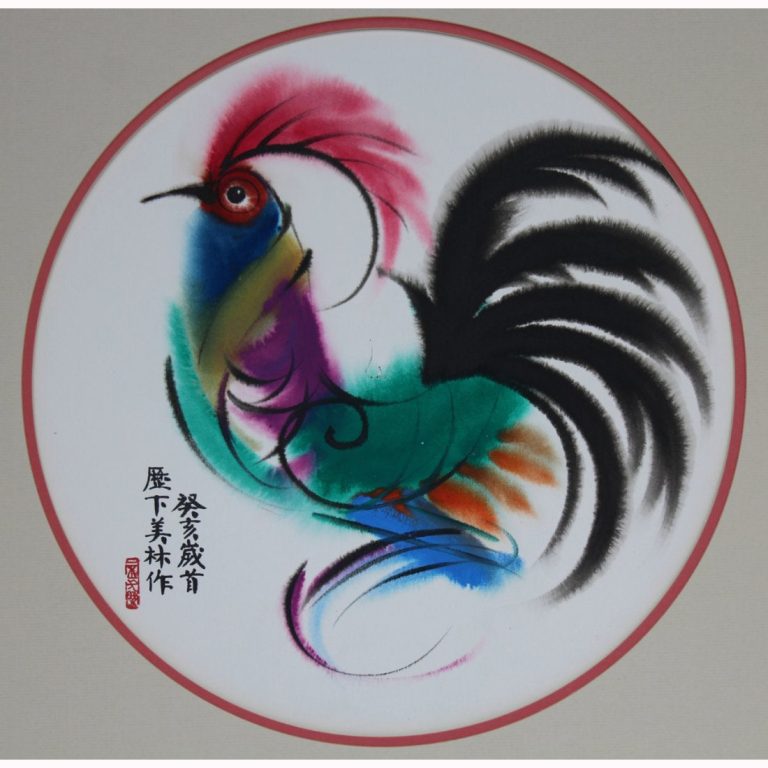Han Meilin (B. 1936) “Rooster”

Han Meilin (Chinese, B. 1936) “Rooster” Signed lower left. Ink on Paper. Provenance: Collection of James A. Helzer (1946-2008), Founder of Unicover Corporation.
Two thousand years ago in ancient Mesopotamia, Babylonians and Assyrians celebrated their new year — Akitu — during new moons nearest the spring and autumn equinoxes. The ancient Greeks observed the new year with the winter solstice in December, the Romans on March 1. In 154 B.C., Roman festivities were moved to January 1, a date confirmed more than a century later with the adoption of the Julian calendar — named for Julius Caesar. Judaic new year customs have altered little over the centuries. Since ancient times, the first day of the month of Tishri — around our September 5 — has marked the beginning of the Jewish new year and the religious holiday, Rosh Hashana. In parts of India, religious pilgrimages and worship of the Ganges River are typical new year activities. Japan celebrates this holiday on January 1-3 with household decorations of sacred rope to ward off evil spirits, and special foods to ensure prosperity and good health. In China, people welcome the new year by exorcising demons from their homes and offering appeasing gifts to both the spirits of ancestors and the gods of home and fortune. The Chinese new year festivities, commencing in late January or early February, last an entire month. The Chinese lunar calendar is aligned in repeating 12-year cycles represented by 12 animals — the Rat, Ox, Tiger, Rabbit, Dragon, Snake, Horse, Sheep, Monkey, Rooster, Dog and Pig. 1993 marked yet another Year of the Rooster.
Image Diameter: 13 in.
Overall Size: 20.75 x 20.75 in.
Click here to print.
go back
